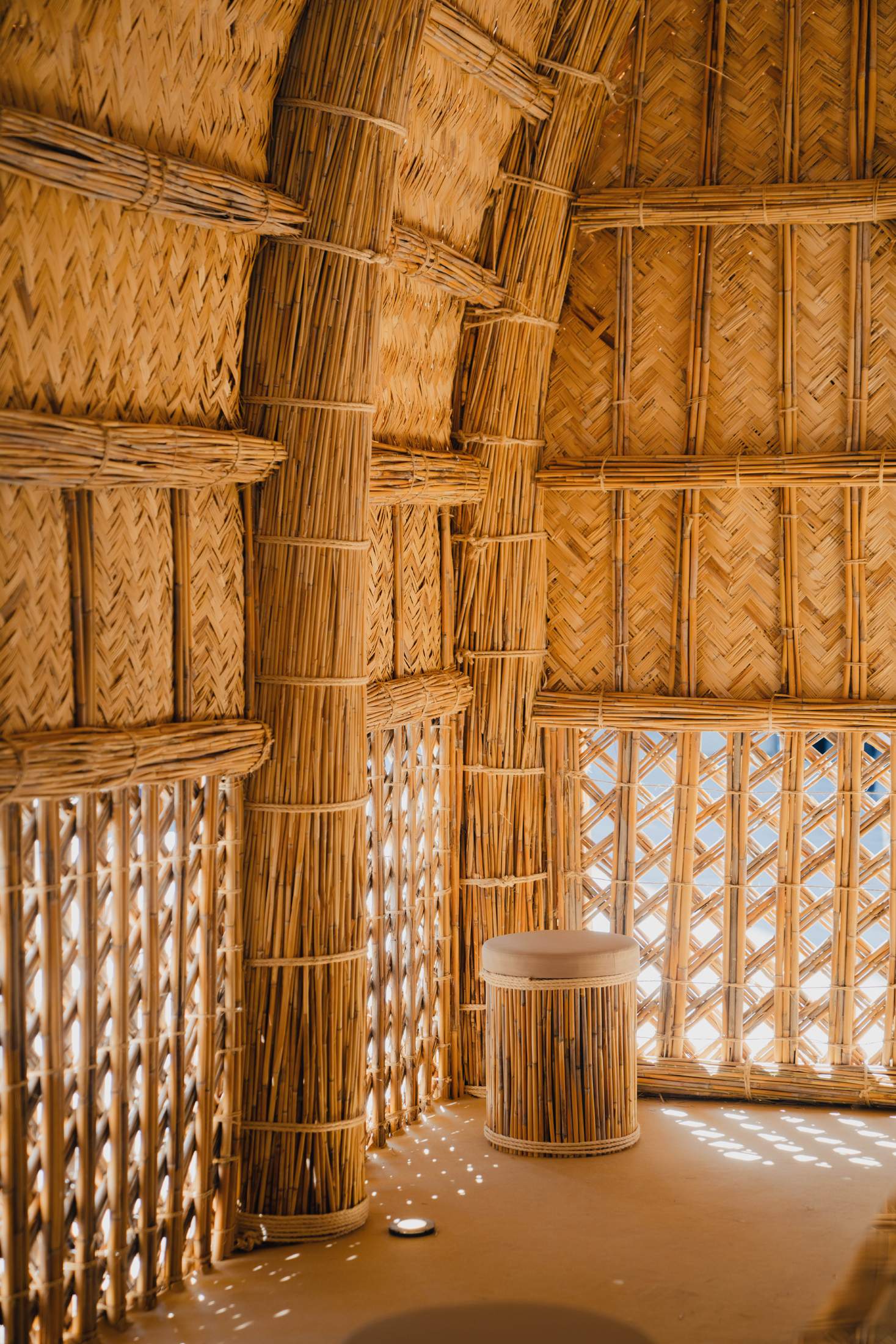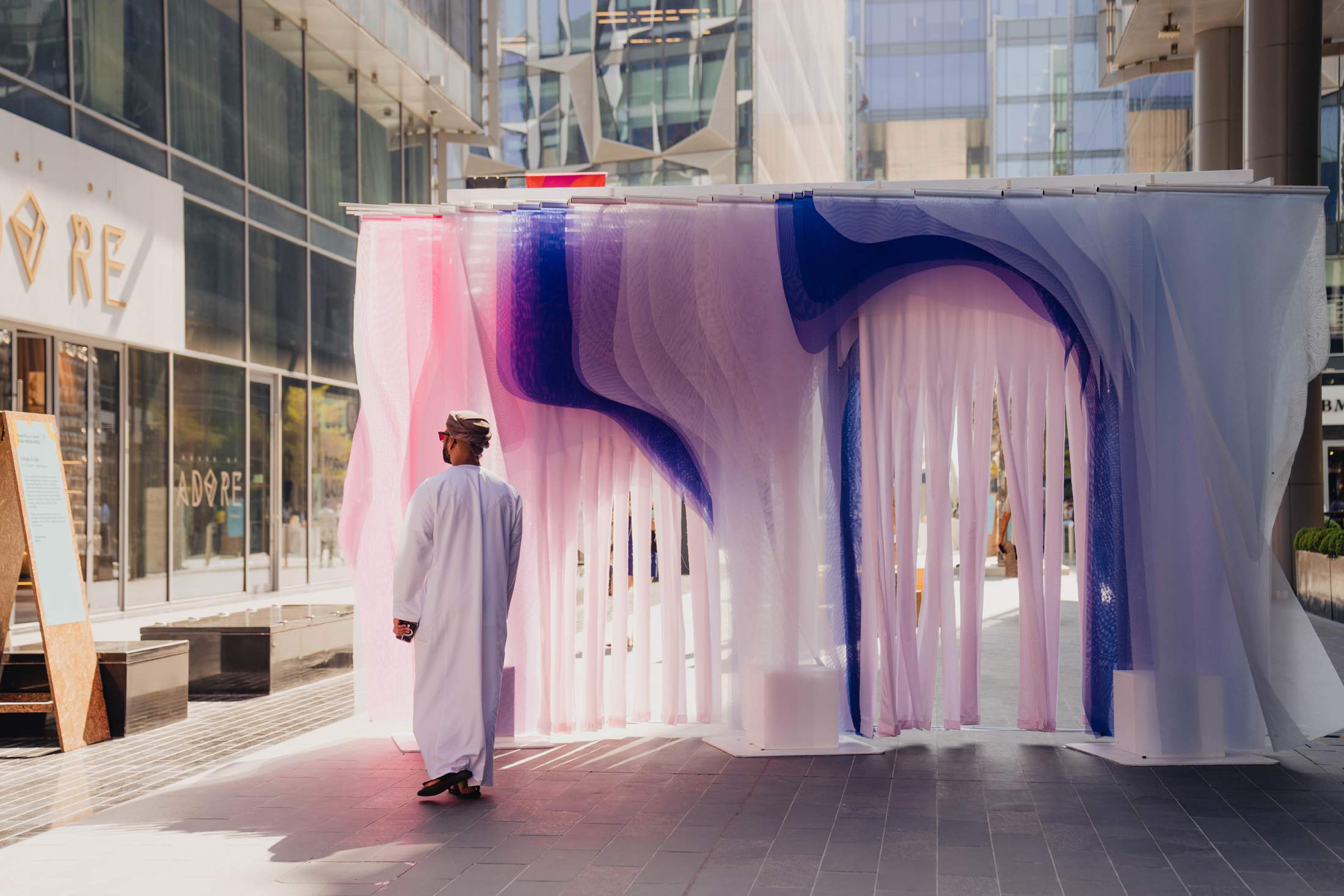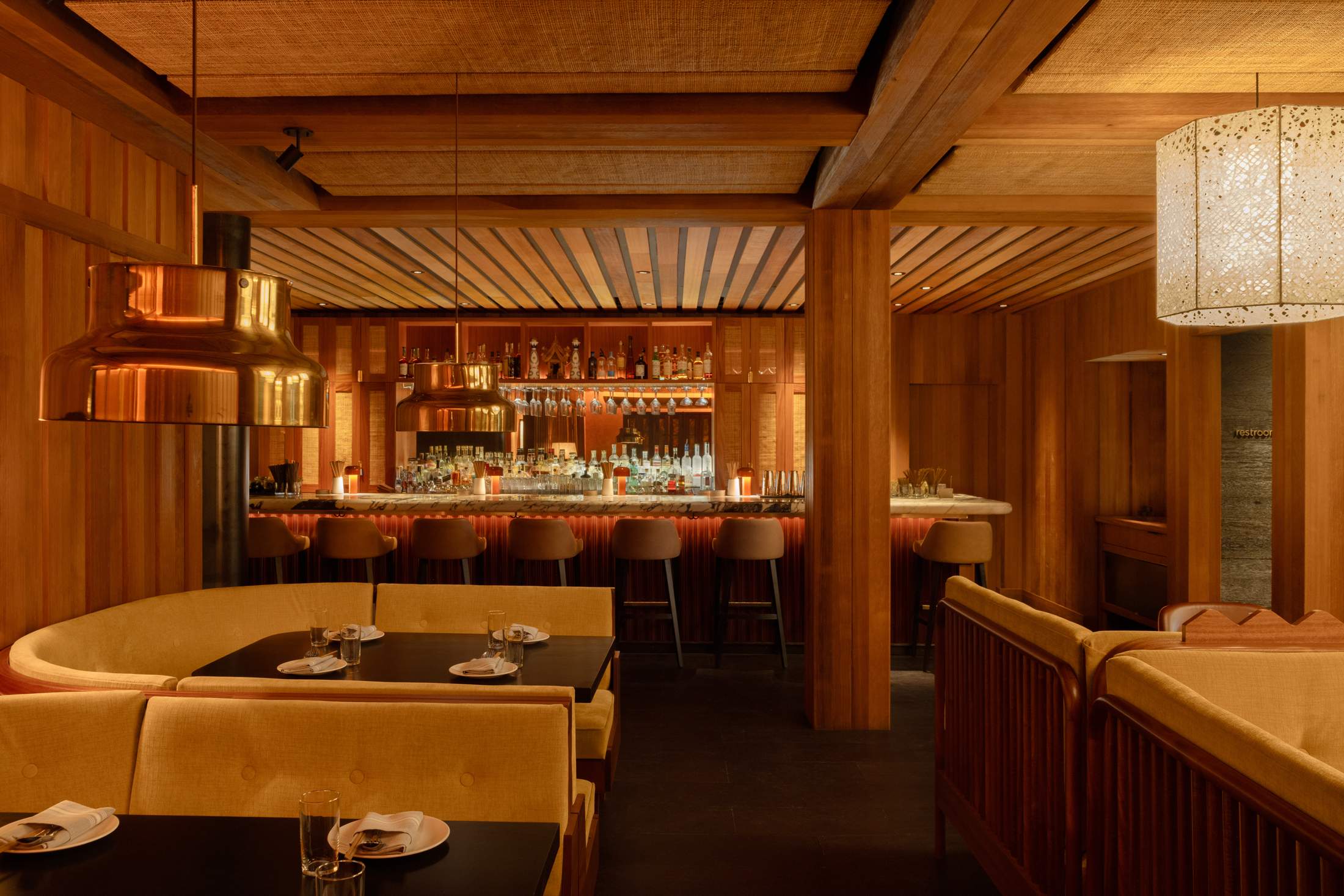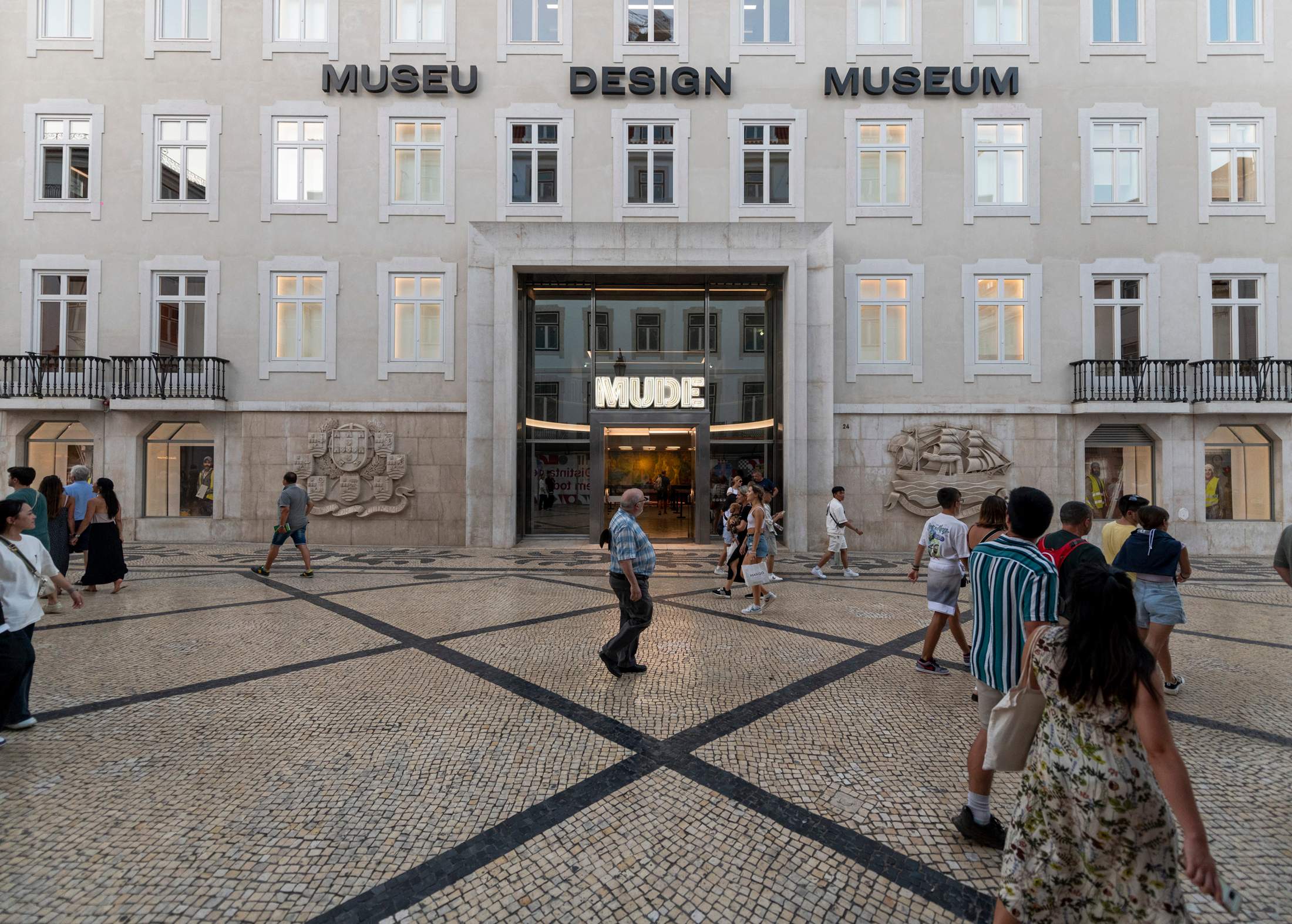December/January / Global
The Agenda: Design & Urbanism
Lisbon’s design museum, an off-piste dinner in Aspen, and Thai architect and singer Yarinda Bunnag.
On Design
NIC MONISSE ON...
Dubai Design Week
At the turn of the century, when the likes of Norman Foster, Zaha Hadid and Rem Koolhaas began designing buildings in Dubai, the Emirate faced criticism for importing talent rather than nurturing it. But things have changed. The city’s design scene is growing in confidence and nowhere is that clearer than at Dubai Design Week. The most recent edition of the annual event, which took place in November 2024, made local talent the headline act (even key international draws such as India Mahdavi have Middle Eastern roots).
“There has been a shift recently,” says Dubai native Omar Al Gurg, guest curator of the 2024 event’s uae Designer Exhibition and founder of furniture and lifestyle brand Modu Method. “A lot of people in the Emirates are now looking for regional designers to be able to actually design furniture and places for people to live the way we’re supposed to be living in this region. We’re not bringing in as much design from Europe, which is great. It’s becoming much more contextual.”
But what’s perhaps most impressive about the event is the way these local talents have been made the stars of the show. Rather than the majority of works on display being commercially ready for production or produced by designers without any financial support (as is often the case at design events across the globe), Dubai Design Week commissions new and experimental structures and installations. In November, there was a cardboard pavilion made to experiment with new building forms by Dubai-based studio Deond, unconventional furniture by Iraq-based architect Ola Saad Znad, crafted from reeds using ancient techniques and much more. In short, it’s a showcase focused on innovation and potential rather than sales.



“It’s about the designers who are willing to enter this space of experimentation making themselves vulnerable and leaving room for failure,” says Natasha Carella, director of Dubai Design Week. “It’s only by being inventive that we can move forward.” This event is one of the most impressive in the industry – and it’s cultivating an equally strong community. —
For more design-minded opinion, analysis and insight, subscribe to The Monocle Minute on Design newsletter today for free. Visit monocle.com/minute to sign up.
MEET THE DESIGNER...
Yarinda Bunnag

Yarinda Bunnag, a Thai architect, actor and singer, swapped the big smoke of Bangkok for the quiet beach town of Hua Hin, a three-hour drive south, during the pandemic. The change of location has been a success but, when it comes to her career, the 44-year-old polymath has by no means settled down. “I enjoy the creative process of making things within a wide range of disciplines, from music to acting and architecture,” Bunnag tells monocle, while sitting on a plastic patio chair looking out to sea.
In her latest Netflix show, Terror Tuesday, an eight-part horror series released in August 2024, Bunnag plays a haunted single mother. “I’m old enough now to accept the mum roles,” she says with a smile. It was the birth of her first child a decade ago that eventually ended her career as a recording artist: parenthood was incompatible with the songwriting process. Then, in 2018, Bunnag co-founded her own architecture studio, Imaginary Objects.
Bunnag’s varied career can be traced back to a teenage deal she cut with her parents. While doing internships in West End London theatres and submitting a demo tape to Thai record labels, she would also apply to university. If she was accepted by a prestigious name, she would enrol.
“At the time, I had no idea about architecture,” she says. Bunnag credits her father, a retired property developer, for suggesting architecture as a union of her many talents. Signed at 18 by a major label and accepted by an Ivy League university, she completed her first year of studies in upstate New York before taking a year out to go home and record, promote and tour her debut album, Yarinda. After returning to complete her undergraduate studies, she worked at several architecture practices in Bangkok while also releasing albums, lecturing at Thailand’s top university and completing a master’s degree at Harvard.
Six years after co-founding Imaginary Objects with Roberto Requejo Belette – who had just left architectural firm oma for a teaching job in Hong Kong – the pair can afford to be picky and prefer to take on fun projects over large paychecks. Last year also saw a move into products. A commission from a social enterprise to design a moveable playground for several children’s festivals led to Kitblox, a series of interlocking foam blocks that can be assembled into a variety of structures. The “Made in Thailand” kits have been bought by schools, libraries and daycare centres across Bangkok. Another career to add to the CV? “I’m not a good salesman and we’ve never sold products before, so we are horrible at marketing,” she says. It seems that simply doing what makes her happy is paying off.
imaginaryobjects.co
INTERIORS — USA
Holding sway
Looking for an unexpected spot for dinner before your après-ski moment? The US resort town of Aspen might just have the answer, in the form of a new Thai-fusion restaurant. The blend of influences, however, is more in the design of the space than its cuisine (which is straight-up modern Thai). Sway Aspen’s inviting interiors are the handiwork of the Texas-based Michael Hsu Office of Architecture (mhoa), which previously worked on Sway’s flagship restaurant in the state capital, Austin. The design takes its cues both from Thailand’s decorative traditions and from the aesthetics of the Rocky mountains, with plenty of teak fittings, gentle lighting and plush banquettes. It’s an ideal setting to sample the restaurant’s dinner and après menus, not to mention its fantastic cocktails.

The interiors use warm materials and tones: think brass details, leather seats, clay plaster and lamps made from Thai mulberry paper. “It’s a carefully designed space but not too precious,” says mhoa founder Michael Hsu. “It’s intimate and the type of place you want to gather and relax with friends for a great meal after a day on the slopes.” Come winter, we’re sure that this new addition to Aspen will sway many.
aspen.swaythai.com; hsuoffice.com
RENOVATION — LISBON
Open arms

Following a eight-year hiatus, Lisbon’s Museu do Design (mude) has finally reopened. The update has created space for a new long-term exhibition that displays more than 500 design and fashion pieces by Portuguese and international creatives. The renovation work, led by Bárbara Coutinho, director of mude, and Luis Miguel Saraiva, architect of the Lisbon City Council, focused on stabilising the eight-storey, 18th-century edifice. Critical anti-seismic reinforcements have allowed for existing materials such as brick, concrete and stone to be left exposed in a nod to the various renovation works that have taken place during the building’s 300-year history. The revitalised exhibition galleries occupy four floors and have no partitions, creating open spaces that can adapt to suit the needs of temporary shows.
Perhaps the most significant change, however, is that this former headquarters of Banco Nacional Ultramarino (a financial institution with ties to Portugal’s 20th-century national dictatorship) is now fully open to the public for the first time in its history. Previously hidden spaces and floors – including a dedicated design library, which has been expanded over the past 10 years and is furnished with Portuguese-made wooden furniture – now welcome alfacinhas (people from Lisbon) and foreign visitors alike. “In the past the building was a closed, hierarchical and segregated space,” says Coutinho. “Now it has been transformed into an open, democratic and participative place.”
mude.pt


